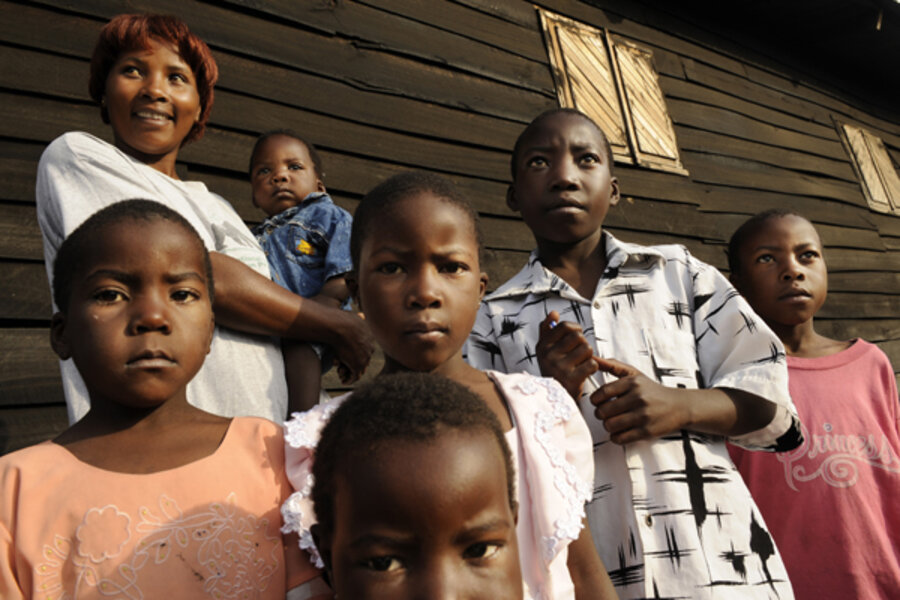A look at global population trends
Loading...
The story of the 21st century has been one of falling birthrates, rising standards of living, and a revolution in food production. But the global picture is uneven: As populations decline in wealthier nations, in other countries – particularly in Africa, says a new report – they are rising at rates that may mire their people in poverty.
Q: What countries are growing the fastest?
The 10 countries with the highest fertility rates are all in Africa, led by Niger, where women give birth to an average of 7.6 children. Burkina Faso, with a fertility rate of 6 children per woman, is the slowest growing of the 10, all of which are among the world's poorest countries as well. Recent research by the Population Reference Bureau in Washington projects that Africa's population will more than double by 2050, from 1.1 billion people today to 2.4 billion. Nigeria, already the most populous nation on the continent with 174 million people, is projected to be the third most populous in the world by 2050, with 440 million, after China and India.
Q: What countries are growing the slowest?
The surprising leader is Bosnia-Herzegovina, with just 1.2 children per woman. The others in the top 10 least-fertile countries all average 1.3 children per woman and include three Asian countries: Taiwan, Singapore, and South Korea. The others are in Europe: Moldova, Poland, Portugal, Spain, Slovakia, and Hungary. The fertility rate in the United States is 1.9 children per woman, which implies a declining population. But America is expected to grow in the coming decades because of immigration.
The average global fertility rate is now 2.5 children per woman, down from almost 5 in 1960.
Q: So does that mean Africa is in trouble and everyone else is not?
Not necessarily. While there are major concerns that population growth will outstrip economic growth in many African countries, many other countries are deeply worried about the possibility of declining populations, which undercut economic growth and leave fewer and fewer workers to provide for systems that will burgeon with retirees.
Even China is worried about the effect of a declining population 35 years after instituting its draconian "one child" policy. China was concerned that it wouldn't be able to feed its people when it made it illegal for couples to have more than one child and engaged in forced sterilizations and abortions to cut population growth. China's population, now at 1.35 billion, is expected to drop by 2050.
Q: What are the solutions?
There aren't any easy ones when it comes to the African countries whose population growth rates are so high. Rising income and education levels lead to lower fertility rates, but accomplishing those first two things is challenging – even more so when a poor country's limited educational resources are swamped by a vast number of children.
Consider Niger, which the Population Reference Bureau compares to the Netherlands, since both countries have roughly 17 million people today. At the moment, 50 percent of Niger's population is younger than age 15, compared with 17 percent of the Netherlands'. And given Niger's extremely low standard of living, parents in Niger have an unfortunate incentive to bear more children: The bureau estimates that 43,000 infants died in Niger last year. In the Netherlands, by contrast, the figure was 650.
Q: Which countries are expected to have the largest populations in 2050?
India, which has 1.3 billion people today, is expected to supplant China in the top spot by then with a projected population of 1.65 billion. The US, though still growing, will fall from its current No. 3 position, with 316 million, even though it will rise to a projected 400 million. That will put it at No. 4, behind Nigeria, which is about one-tenth the size of the US in area.
Ethiopia and Congo are expected to join the top 10 by 2050, pushing out Japan and Russia. Congo's population is projected to rise from 71 million today to 182 million, and Ethiopia's from 89 million now to 178 million.






